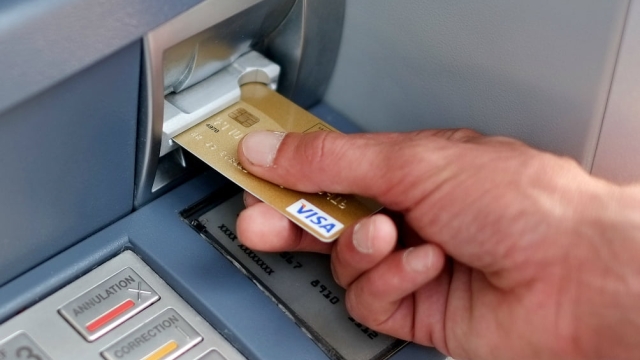
In today’s fast-paced world, access to cash is more important than ever. Automated Teller Machines, or ATMs, have revolutionized the way we manage our finances, providing quick and convenient access to cash at virtually any hour of the day. Whether you need to withdraw money for daily expenses, pay bills, or handle unexpected emergencies, understanding how ATMs work can unlock the secrets to efficient cash management.
This essential guide will delve into the intriguing world of ATMs, highlighting the role of companies like ATMgeorgia, which specializes in cash processing, installation, and de-installation services. By exploring how ATMs operate and the technology behind them, we aim to equip you with the knowledge you need to make the most of these invaluable financial tools.
Understanding ATMs: How They Work
Automated Teller Machines, commonly known as ATMs, are convenient machines that allow users to access their bank accounts and perform various financial transactions without needing to visit a bank branch. When you approach an ATM, you typically insert your debit or credit card, which contains a magnetic stripe or chip that holds your account information. The machine reads this data and establishes a secure connection with your bank’s server, ensuring that your identity is verified before allowing any transaction.
Once authenticated, users can withdraw cash, deposit funds, transfer money between accounts, and check account balances. Each transaction requires input from the user, such as selecting the desired amount for a cash withdrawal. The ATM then communicates with the bank to confirm that these requests can be fulfilled based on the available funds in the customer’s account. After processing the transaction, the machine dispenses cash or provides a receipt as confirmation.
ATMs vary in their functionalities, with some offering additional services like bill payments or mobile top-ups. They also incorporate security features to protect user information, including encryption during data transmission and the use of cameras to deter theft. Companies like ATMgeorgia play a crucial role in maintaining these machines, ensuring they are stocked with cash and operational through regular installations and de-installations.
ATM Installation and Maintenance
Installing an ATM is a critical step that requires careful planning and execution to ensure optimal performance and security. The process starts with selecting a suitable location that sees high foot traffic, which maximizes accessibility for users. Once a site is chosen, our team at ATMgeorgia assesses the infrastructure needs, including power sources, internet connectivity, and any necessary permits or permissions from property owners or local authorities.
Maintenance is equally important after installation. Regular checks are essential to keep the ATM functioning smoothly and efficiently. Our service includes monitoring cash levels to prevent outages and addressing any technical issues that may arise. By committing to a comprehensive maintenance schedule, we aim to minimize downtime and ensure users have continuous access to their cash needs.
In addition to routine maintenance, ATMgeorgia also provides services for de-installation when necessary. Whether due to relocation, upgrades, or site closures, we handle the process with careful attention to detail, ensuring that all financial and hardware aspects are managed efficiently. This thorough approach guarantees that businesses can rely on us not only for installation but also for ongoing support throughout the ATM’s lifecycle.
Cash Loading Procedures
http://atmgeorgia.com/
When it comes to cash loading for ATMs, the process is crucial for ensuring that the machines are always stocked and ready for transactions. First, it is important to plan the frequency of cash loads based on the ATM’s transaction volume. High-traffic locations may require daily visits, while quieter sites might only need weekly or biweekly service. Proper planning helps to avoid cash shortages and ensures that customers can access their funds whenever they need them.
The cash loading process begins with a thorough security check. Personnel responsible for the loading must be trained in security protocols to ensure the safety of both the cash and themselves. This includes verifying identification, using secure transport methods, such as armored vehicles, and following strict procedures when handling cash. Once on-site, the cash is counted and verified against inventory records before it is loaded into the ATM.
Finally, accurate documentation is essential during the cash loading procedure. Keeping a detailed log of each transaction provides accountability and helps track cash levels. This documentation should include the amount of cash loaded, the denomination breakdown, and any discrepancies noted during the process. By adhering to these procedures, ATM operators like ATMgeorgia can maintain efficient cash management and ensure the reliability of their machines.
Common Issues and Solutions
One common issue that users face with ATMs is card retention. This occurs when the machine retains the user’s card instead of dispensing it back after a transaction. The most effective solution to this problem is to remain calm and wait for the ATM to return the card, which usually happens after a short period. If the card is not returned, users should immediately contact the bank associated with the ATM for guidance and assistance to retrieve their card.
Another frequent complication involves cash dispensation errors, such as the machine failing to dispense the requested amount or dispensing the incorrect denomination. In such cases, users should check for any on-screen messages that may provide information about the transaction. If the error cannot be resolved on-site, it is advisable to take note of the machine’s identification number and contact the bank for a transaction review and a potential refund.
Lastly, connectivity issues can lead to problems with ATM functionality. If an ATM is unable to connect to the bank’s network, it could cause delays or errors during transactions. Users experiencing this should try another ATM, especially one from their own bank, as it is less likely to encounter such problems. Regular maintenance and monitoring by providers like ATMgeorgia ensure that machines are operational, but users should report any malfunctions for timely repairs.



